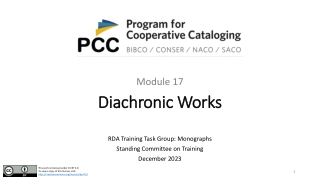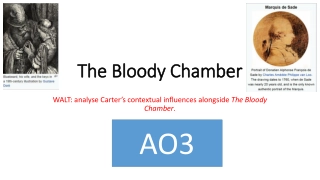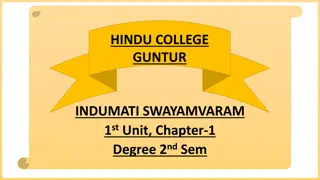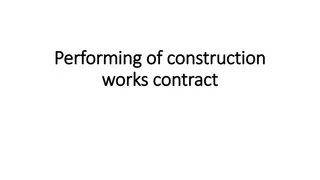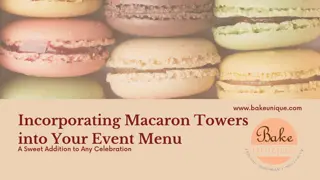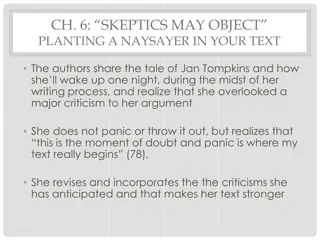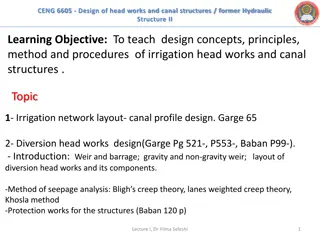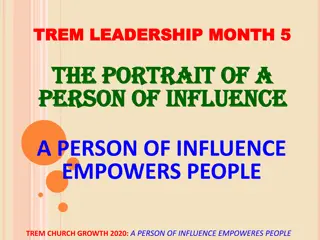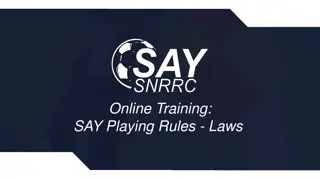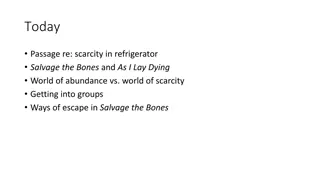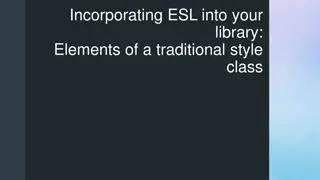Incorporating Others' Works: They Say/I Say Approach
This presentation by Dr. Vicky Gilpin emphasizes the importance of incorporating others' works into your writing, specifically focusing on the "They Say" portion. It highlights the concept of engaging in conversation with various viewpoints, utilizing scholarly forms, and mapping claims relative to others' perspectives. The approach of "They Say/I Say" not only enhances writing skills but also brings an ethical dimension by encouraging students to engage in diverse exchanges, contributing to true democracy.
Download Presentation

Please find below an Image/Link to download the presentation.
The content on the website is provided AS IS for your information and personal use only. It may not be sold, licensed, or shared on other websites without obtaining consent from the author. Download presentation by click this link. If you encounter any issues during the download, it is possible that the publisher has removed the file from their server.
E N D
Presentation Transcript
Information from They Say/I Say Dr. Vicky Gilpin This ppt represents the They Say portion and how to incorporate others works into your paper
Why do we need to know this? Experienced writing instructors have long recognized that writing well means entering into conversation with others. Academic writing in particular calls upon writers not simply to express their own ideas, but to do so as a response to what others have said (xi). A group of particular scholarly forms exist that can help young writers get used to this style. One way to learn is to read a lot of scholarly writing to intuit the forms. Another is to read works like The Short Guide to College Writing and They Say/I Say.
How do we do this? Effective persuasive writers do more than make well- supported claims ( I say ); they also map those claims relative to the claims of others ( they say ) (xiv). Here is an example of surprise-reversal: For decades, we ve worked under the assumption that mass culture follows a path declining steadily toward lowest- common-denominator standards, presumably because the masses want dumb, simple pleasures and big media companies try to give the masses what they want. But . . . The exact opposite is happening: the culture is getting more cognitively demanding, not less (Johnson).
Concepts to think about when looking for research or incorporating research What do they say about my topic? What would a naysayer say about my argument? What is my evidence? Do I need to qualify my point? So what?
Finally, A major virtue of the they say/I say model is that it returns writing to its social, conversational base. As a result, this approach to writing has an ethical dimension; it asks students not simply to keep proving and reasserting what they already believe, but to stretch what they believe by putting it up against the beliefs of our increasingly diverse, global society, to engage in the reciprocal exchange that characterizes true democracy (xx).
The Major Point of this Method Often without consciously realizing it, accomplished writers routinely rely on a stock of established moves that are crucial for communicating sophisticated ideas (1).
You still need to start with what others are saying.
Hints Do not overwhelm your paper with so many other sources that your reader has no idea how you are using them to argue your point---be explicit with your argument. Even if you primarily give the opposition as context in the introduction before a surprise-reversal style thesis that will lead to support throughout the work (from other sources), you must keep the opposition in mind throughout.
You do not want to say the author says or another critic says throughout the paper; it is boring
Verbs for Making a Claim (p37) Argue Assert Claim Emphasize Insist Observe Suggest Indicate
Verbs for expressing agreement between works/ideas Acknowledge Agree Corroborate Endorse Extol Reaffirm Support Verify
Frame Every Quotation Finding relevant quotations is only part of your job; you also need to present them in a way that makes their relevance and meaning clear to your readers. Since quotations do not speak for themselves, you need to build a frame around them in which you do that speaking for them (41).
This is also known as point, proof, comment Point----the top bun: usually the topic sentence or a major sentence of a paragraph Proof----the insides/veggies/meat: the statistics, quotation, source material that supports your point Comment----the bottom bun: where you elaborate on and explain the connection of the quotation/source information to the point/topic and the thesis. You may have more than one point/proof/comment trio per paragraph.
Even with a point and comment, the quotation cannot just float alone in space
Templates for introducing quotations: Smith (2009) states, blahblahblahblah (32). As the prominent author Jones (2001) puts it, blahblahblahblblah (27). According to Menzel, blahblahblah (2005, 27). Writing in the journal Blahblahblah, Garcia (2003) indicates, blahblahblah (para. 16). Cortez agrees when she writes, blahblahblah (2003, 78). Johnson disagrees when he notes, blahblahblah (2001, 98).
Templates for explaining quotations (this is how you might start your comment) Basically, Smith is saying In other words, Jones believes By making this comment, Garcia argues Johnson insists The essence of Cortez s argument is
This is just a start, but recognizing these templates can help you in your own writing





